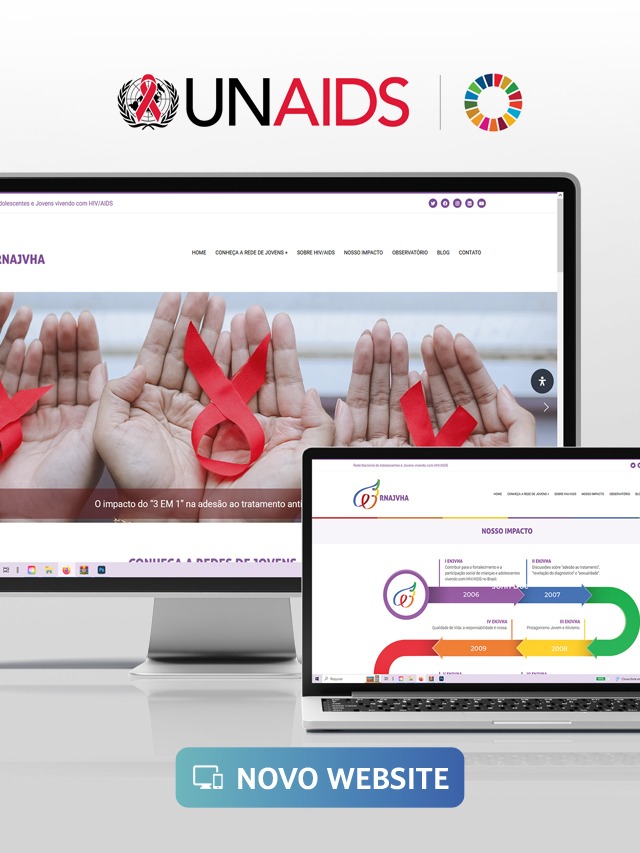Young people, women and netizens have been widely researched by companies, but generally as separate consumer segments. However, their collective strength, especially as the most influential segments in the digital age, has yet to be fully exploited.
In terms of size, each of these groups represents a significant portion of society. However, there is a broader aspect to be considered. There is a common thread that unites them: young people, women and netizens are the most influential segments in the digital age.
Read too: The 70 years of evolution of Marketing: from 1.0 to 5.0
It's no surprise that most subcultures are made up primarily of these three groups. In many parts of the world, they were considered minorities and marginalized by society.
In the past, authority and power belonged to elders, men and city dwellers. However, over time, the importance and influence of these three groups increased considerably. Indeed, subcultures began to influence the dominant culture, with its experiences and extensive networks of communities, friends and family.
What are subcultures?
Subcultures are groups or communities that emerge within a larger culture, presenting their own and distinct characteristics. They represent alternative forms of expression, identity and lifestyle that diverge from the dominant norms and values of the society in which they are inserted.
Subcultures are usually made up of individuals who share common interests, values, and beliefs. These groups identify and differentiate themselves through expressions such as fashion, music, language, behavior, lifestyle and, consequently, ideologies.
Subcultures can arise in different contexts, such as youth groups, art movements, urban tribes, and online communities. They provide a sense of belonging, providing a space where individuals can express themselves freely, meet people with similar interests and pulsate an identity of their own.
Subcultures play an important role in diversity, as they enrich the cultural landscape of a society, bringing different perspectives, values and ways of life. They contribute to cultural evolution and transformation by challenging conventions and making room for alternative ideas and trends.
With the advancement of technology and the popularization of the internet, digital subcultures gained strength and became influential in contemporary society. The internet provides a space where individuals can easily connect, regardless of their geographic location, and find a community that shares their passions and ideas.
Digital subcultures allow participants to express themselves freely, share information, debate, create content and interact with each other. These groups provide a sense of belonging and a supportive community where members feel understood and valued. In addition, digital subcultures can influence popular culture, set trends and shape behavior, thanks to their ability to rapidly disseminate information in the digital age.
Youth: acquisition of participation in minds
Youth plays a key role in setting trends for seniors, especially when it comes to fields of pop culture such as music, film, sports, cooking, fashion and technology. Older people are generally more closed to exploring these areas that are constantly evolving. To give you an idea, a survey conducted by Deezer, with Brazilian, American and European respondents found that we stop discovering new music at 27 years old, on average.
Young people are the trendsetters, the present-day consumers, who demand everything instantly. When it comes to trends, they are so agile that marketers often cannot keep up with them. The positive side of this is that these professionals can identify movements that will influence the market in the near future.
Younger generation consumers are often the first to test new products and are often the main target of marketing campaigns. We can call them early adopters, also known as early adopters. When young people embrace new products, they often hit the mass market with success.
According to a 2014 United Nations Population Fund (UNFPA) report, there were 1.8 billion young people between the ages of 10 and 24, the highest number in human history, and that number continues to grow. About 90% of them live in developing countries. They are facing many challenges in realizing their potential in terms of education and careers, while also shaping social dynamics with their friends.
The truth is that young people are not afraid to experiment. They test innovative new products and services that older folks consider too risky.
The aim of brands is to be relevant to young people at an earlier age and thus gain access to their ever-depleting wallets. Today's young people will soon be the main target audience and probably the most profitable customers. Strategies that privilege them tend to have greater chances of success.
While many youthful trends end up being fleeting, some evolving trends manage to catch up with mainstream culture. The whole universe of social media such as Facebook, Instagram and Twitter started as a trend among young people. Similarly, music streaming services like Spotify, Deezer and Apple Music were introduced to the market mainly by young people.
Young people are agents of change. They react more quickly to the transformations that are taking place in the world, such as globalization and technological advances. They are among the main drivers of change in the world.
All these roles – early adopters, trendsetters and change agents – lead to the conclusion that young people are the key to winning the minds of mass market consumers or mainstream. Convincing young people is an important first step if brands want to influence customers' minds.
Women: market share growth
The female market is a logical target for marketers. In addition to being huge, this segment also has a unique profile.
The intrinsic differences between men and women have been the subject of study for both psychology and marketing. Several experts presented their views on marketing to women. Many products, services and marketing campaigns have been developed especially for them.
The influence that women exert on other people is defined by the activity they perform. We can segment the female market into four categories: conforming housewives, housewives planning to work, women with jobs, and women with careers.
Simply put, women's world revolves around work and family. The dilemma they often face is choosing between these two alternatives or finding a balance between them. Women are intrinsically better at managing complex, multifaceted assignments, whether at home, work, or both.
In general, there are three roles that women play: information gatherers, holistic shoppers, and household managers.
As information gatherers, women's decision-making process differs from men's. While men's path to purchase is short and straightforward, women's resembles a spiral, often going backwards to gather new information and reevaluate whether taking the next step is the right decision.
Not only do women do more research, they also talk more about brands. They seek the opinions of friends and family and are open to receiving help from others. For marketers, the information-gathering nature of women has its benefits, indicating that all customer communication and education campaigns are not in vain.
As holistic shoppers, the fact that their spiral buying process has more touchpoints means they are exposed to more factors to consider. They tend to evaluate everything before determining the true value of products and services. Certain categories are evaluated by women not only for themselves, but for the whole family.
Women also explore more brands, including less popular ones that they believe are more valuable. Therefore, they are more confident in their choices, are more faithful and more inclined to indicate and recommend to their community.
As household managers, because of all these qualities, women are in fact the financial directors, supervisors of purchases, and managers of the family's assets. The issue is that the role played by women in the home is spilling over into the workplace.
Women's influence at home and at work is growing. As information gatherers, holistic shoppers and home managers, women are critical to gaining market share in the digital economy. To access even larger markets, brands will need to go through women's comprehensive decision-making process.
Read too: The Generation Gap – Marketing to Baby Boomers and Generations X, Y, Z, and Alpha
netizens: expansion of participation in hearts
The term “netizen” combines the words “citizen” and “internet”, referring to people who use the internet in an active, participative and engaged way. It was first coined in 1990 by Michael Hauber.
You netizens they are considered the true citizens of democracy, as they want to be involved in the development of the internet. They see the world horizontally, not vertically. Internet content is created and shared from person to person. They believe in a total democracy, not putting so much focus on governments.
However, not all internet users can be considered netizens or citizens of the internet. According to this segmentation, there is a hierarchy of Internet users, which includes inactive, spectators, participants, collectors, critics and creators. The collectors, critics and creators are the ones that best characterize the netizens, as they actively contribute to the internet, not just being limited to passive consumption.
Their role in influencing is tied to their desire to always be connected and contribute. You netizens they are social connectors.
There are many ways to connect socially on the internet, with social media services and instant messaging apps such as Facebook, WhatsApp, Instagram and LinkedIn being the most popular. At first glance, online communities may look like networks of strangers, but on the inside, they are networks of trusted friends.
You netizens they are also expressive evangelists. We can see this with the rise of brand advocates. In the internet world, we know the social factor: followers, fans and friends. When they are excited and committed to a brand, netizens become the social factor. They turn into brand advocates or worshipers.
Brand advocates are also storytellers, spreading news about brands across their networks. They tell authentic stories from the customer's point of view, a role that advertising will never replace. Like the netizens they are more visible than other internet users, they wield enormous influence, often with large followings, fans and friends.
You netizens are also content contributors. Your work makes life easier for other users. With the use of tags, information is better organized and the search for quality content becomes easier.
However, the most important contribution is the creation of new content, which can take different formats, such as articles, videos, e-books, infographics, games and even movies. Independent authors create web pages, video channels and post commercials on YouTube.
With the constant creation of new content, the internet is becoming increasingly rich and useful. This not only increases the number of netizens, but also the value of the internet. The growth of these communities, based on emotional and mutually beneficial connections, is critical to expanding a brand's share in the hearts of consumers. When it comes to spreading the message through community word of mouth, netizens stand out as the best amps. If the brand message gets that group's stamp of approval, it will flow along social connections naturally.
Reflection
How can your brand gain a greater share of minds by leveraging the roles of early adopters and youth trendsetters?
How can your brand increase market share by leveraging women's influence?
How can your brand gain a greater share of consumers' hearts through netizens What do you admire?





























